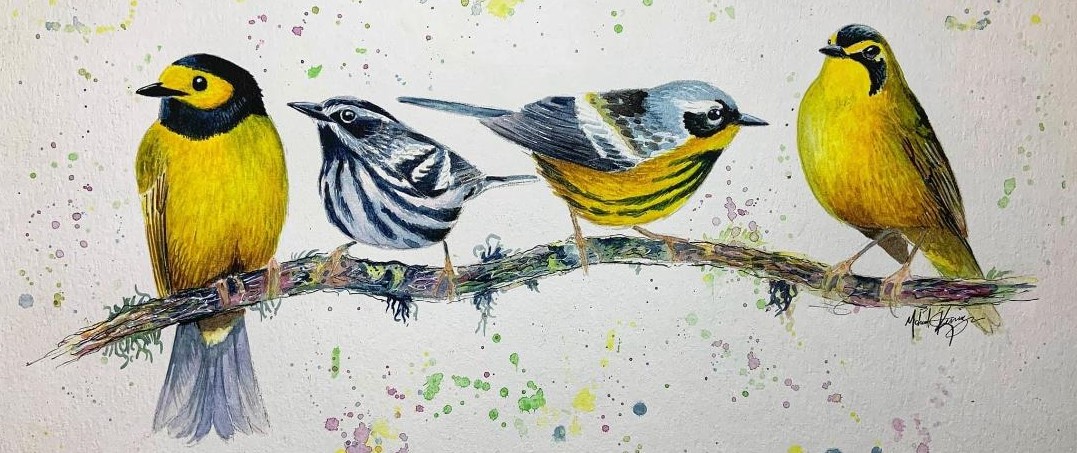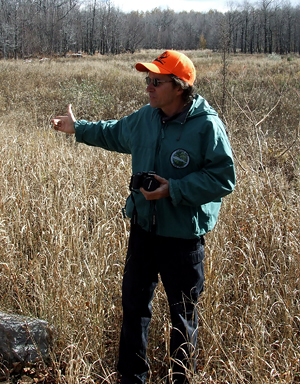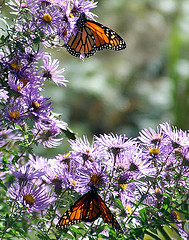Pennsylvania author and naturalist Scott Weidensaul shared the following message on a birding listserv. I'm sure he wouldn't mind if we passed it on, as well.
I trust by now everyone on this list is aware of the significant attack being launched on rare species in Pennsylvania. The deceptively named "Endangered Species Coordination Act" (House Bill 1576 and its Senate companion, SB 1047) would gut the ability of our state resource agencies to list and protect rare plants and animals; essentially only those listed by the federal government would be covered.
A hearing held in Schuylkill County on Monday showed clearly how poorly the bill's own sponsors understand the issues, since virtually all of the examples they raised of allegedly onerous regulations involved federally listed species like Indiana bats, not those like great egrets, American bitterns and upland sandpipers that are listed only by the state, and and which already receive a fairly limited degree of protection because of this.
Among other problems, the bill would make protection of high-quality trout streams far more difficult, and allow lawmakers — not scientists and resource experts — to invalidate protection for rare plants and animals. It shifts the burden for determining whether rare species will be impacted by projects from the developers to the state, and requires — but does not define — "acceptable data" to back up any action. Care to guess who will determine what constitutes "acceptable" data? It won't be the wildlife professionals.
As if we needed more reasons to opposes these bills, their passage would likely mean the loss in up to $27 million in federal wildlife restoration funds, representing up to a third the budgets of the Game Commission and Fish and Boat Commission:
"Pennsylvania could lose $27 million over bills to amend endangered species laws" (The Morning Call)
If you're interested in viewing the hearing for yourself, the video is at: http://livestre.am/4AP00 [Also embedded below.]
This bill is not a joke — with 60 cosponsors, HB 1576 is very likely to win passage, and there's little doubt the governor would sign it.
It's critical every birder in the state takes a moment to contact their state representative and senator, and express in the strongest possible terms their opposition to this travesty of a bill. It is especially important if your rep or senator is a cosponsor. (Mine is, and he got an earful from me about it). The House cosponsors are:
PYLE, GERGELY, MALONEY, MILLARD, MULLERY, KAUFFMAN, D. COSTA, BLOOM, HELM, HARHAI, RAPP, GOODMAN, CUTLER, GIBBONS, AUMENT, MARSHALL, C. HARRIS, REED, PICKETT, MATZIE, HEFFLEY, EVERETT, MASSER, M. K. KELLER, SWANGER, KNOWLES, METCALFE, DUNBAR, SONNEY, GROVE, KRIEGER, REESE, STEVENSON, NEUMAN, SANKEY, CAUSER, SACCONE, ROCK, GODSHALL, TOBASH, MURT, R. BROWN, SCHLEGEL CULVER, P. COSTA, DAVIS, BURNS, P. DALEY, ENGLISH, TALLMAN, BAKER, BARRAR, CHRISTIANA, ELLIS, EVANKOVICH, KORTZ, JAMES, KULA, MAJOR, METZGAR, MOUL, MUSTIO, OBERLANDER, TOOHIL, SNYDER, PASHINSKI, READSHAW, ROAE, SAYLOR
There are fewer Senate co-sponsors:
SCARNATI, WAUGH, GORDNER, ERICKSON, HUTCHINSON, WHITE, RAFFERTY, MENSCH, BRUBAKER, KASUNIC, FONTANA, BREWSTER, TARTAGLIONE, YUDICHAK AND HUGHES
Do this before you pick up your binoculars this weekend. You owe it to the birds.
Scott Weidensaul
Schuylkill Haven, PA


